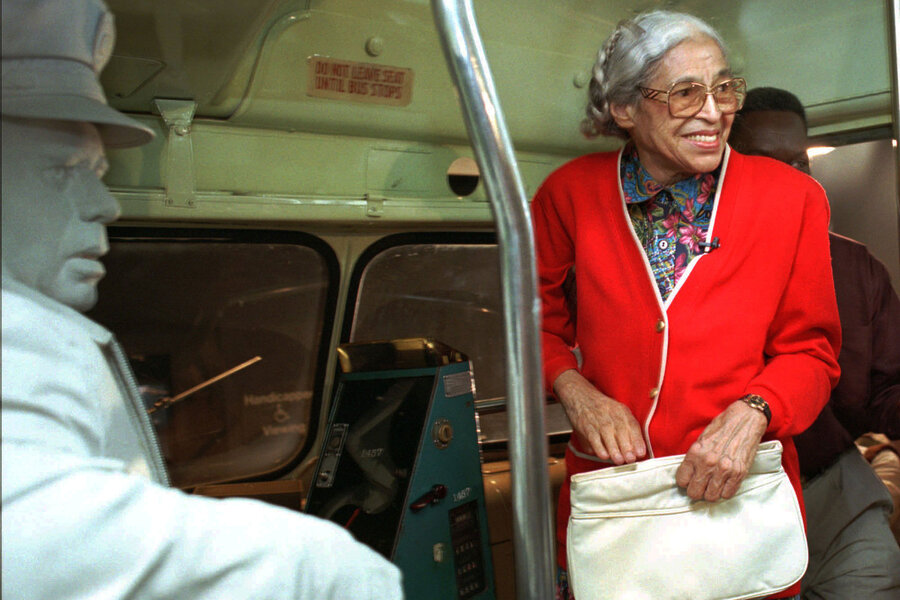60 years after Montgomery boycott, Rosa Parks's struggle continues
Sixty years have passed since the Montgomery Bus Boycott, a protest for racial equality that has rippled through the decades until now.
On Dec. 1, 1955, seamstress and activist Rosa Parks used a bus ride in Montgomery, Ala., to spark interest in a struggle for civil rights that spanned her life. Protests began four days later. A collection of documents from Ms. Parks's life, currently on loan at the Library of Congress, contains a paper bag from the 1990s covered in the elderly civil rights activist's scrawl that reads "The Struggle Continues" over and over again.
For the bus riders of Montgomery, who are more predominantly black now than during Parks's now-famous ride, the continuation of her struggle is literal. The bus system has barely survived recent decades, and buses can be inconvenient, slow, or sometimes never arrive.
"You know if they had the bus boycott back then and all the struggles they went through back then, I feel as though it should be one of the best bus systems in the United States," passenger Larry Love told the Associated Press.
Urban sprawl, ever the enemy of mass transit, has impacted Montgomery's bus system for the worse. Alabama is also one of four states – Arizona, Utah, and Hawaii are the others – that allots no state tax money for public transportation. Bus rider Callie Greer says that buses are not a priority because they are used by people with low incomes, and according to a 2007 survey by the bus system, 84 percent of bus riders are black.
"This is about economic justice," Ms. Greer told the AP. "You have to get to work to have a job."
Many cite other public services as the source of 21st-century racial tensions. Several shootings of black men by white police officers in major US cities have sparked protest – sometimes violent – and calls for more transparent policing. Protests have coalesced around the hashtag and slogan "Black Lives Matter" in a struggle for justice.
"We were loud and angry, but we had a right to be," Charles Preston, a spokesman for protests in Chicago, told Monitor correspondent Nissa Rhee last week. "The cops have their hands on their guns and they are agitating the situation.... I think in a situation like that we show great restraint."
This report includes material from The Associated Press.









